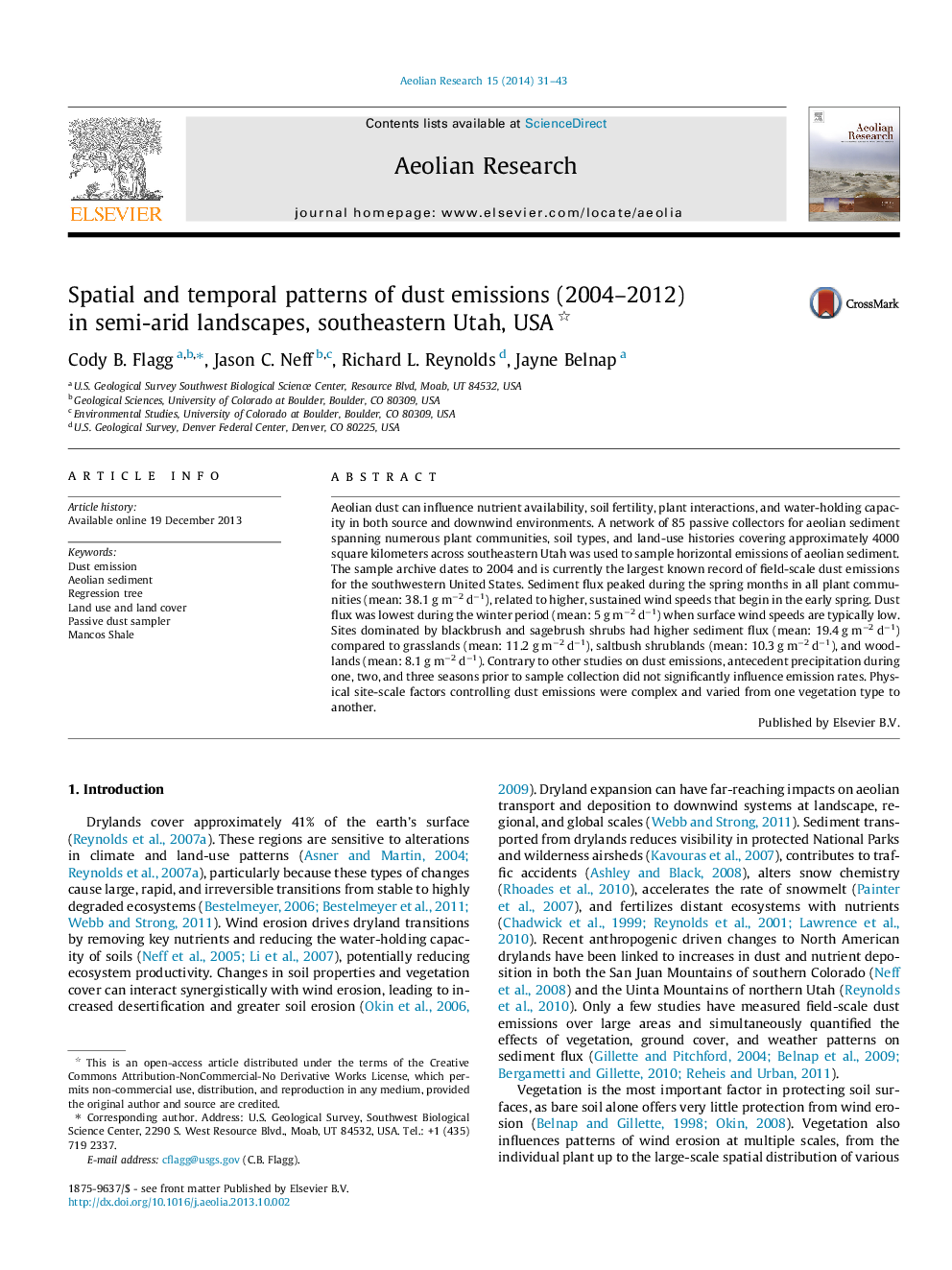| Article ID | Journal | Published Year | Pages | File Type |
|---|---|---|---|---|
| 6426340 | Aeolian Research | 2014 | 13 Pages |
â¢We report dust flux across numerous vegetation settings over an eight-year period.â¢Results suggest a combination of biotic, abiotic, and seasonal variables control sediment flux.â¢Sandy blackbrush shrublands emit the most dust compared to other plant communities.â¢Sparsely vegetated shrublands on shale-derived soils produce little dust, unless disturbed.â¢Erosion wind-speed thresholds are reported per season.
Aeolian dust can influence nutrient availability, soil fertility, plant interactions, and water-holding capacity in both source and downwind environments. A network of 85 passive collectors for aeolian sediment spanning numerous plant communities, soil types, and land-use histories covering approximately 4000 square kilometers across southeastern Utah was used to sample horizontal emissions of aeolian sediment. The sample archive dates to 2004 and is currently the largest known record of field-scale dust emissions for the southwestern United States. Sediment flux peaked during the spring months in all plant communities (mean: 38.1 g mâ2 dâ1), related to higher, sustained wind speeds that begin in the early spring. Dust flux was lowest during the winter period (mean: 5 g mâ2 dâ1) when surface wind speeds are typically low. Sites dominated by blackbrush and sagebrush shrubs had higher sediment flux (mean: 19.4 g mâ2 dâ1) compared to grasslands (mean: 11.2 g mâ2 dâ1), saltbush shrublands (mean: 10.3 g mâ2 dâ1), and woodlands (mean: 8.1 g mâ2 dâ1). Contrary to other studies on dust emissions, antecedent precipitation during one, two, and three seasons prior to sample collection did not significantly influence emission rates. Physical site-scale factors controlling dust emissions were complex and varied from one vegetation type to another.
